Financial management is at the heart of every successful business. As a landlord, the rental yield of a buy-to-let can affect whether you buy a property in the first place. After that, it can help you monitor your investment’s ongoing profitability and performance.
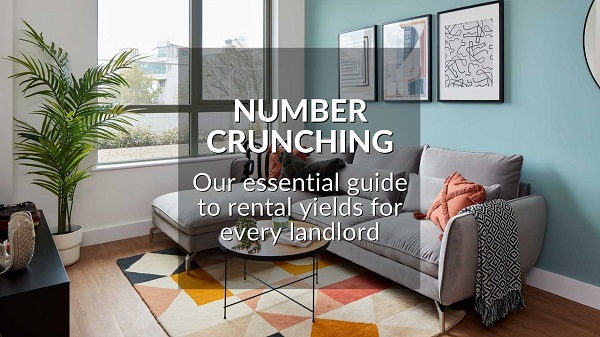
While capital growth forms the backbone of most long-term buy-to-let strategies, the rental yield is often what keeps you in the game. It determines your monthly cash flow and shows you whether a rental property costs or makes you money each month.
With that in mind, this week’s blog includes all you need to know about rental yields: why they’re important, why you should track them, and how to calculate yours to stay on top of your buy-to-let business.
WHY DO RENTAL YIELDS MATTER?
As with any venture, it makes sense to gauge whether it’s a viable proposition at the start and then monitor its performance. Knowing the rental yield of a property will help you work out:

- how much of a good deal it is for the area
- if the income is enough to get a buy-to-let mortgage
- the monthly and yearly profit
- your financial cushion in case of unexpected expenditure
- how well your money is working for you.
So, calculating rental yields is an essential tool in every landlord’s handbook to quickly compare one property with another and see which one makes the best rental investment.
WHAT IS A GOOD RENTAL YIELD?
Many landlords ask the million-dollar question: “what makes a good rental yield?” And the answer is, “it’s different for everyone”.
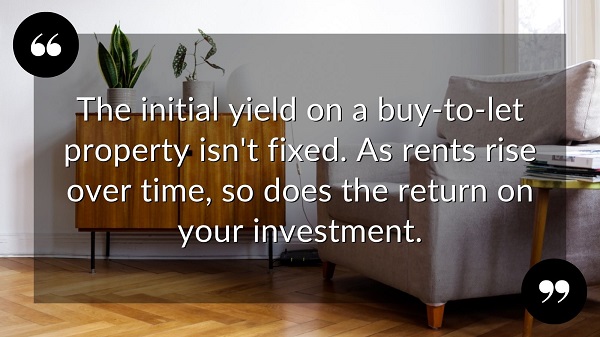
According to research by Zoopla, the average gross rental yield across the UK for a new purchase is 4.86%. While it’s a good benchmark figure, yields can vary widely from region to region, and even from street to street. Do get in touch if you’d like to talk about local rental values in the Salisbury & Wilton area.
Remember that initial yields are not fixed and are only half the story. As rents rise, the yield against your purchase price also increases, leaving you with more spare cash every month. Landlords who bought a rental property in early 2020 have seen the market soar, with average rent increases of 15% driven by a shortage of supply that shows no signs of easing.
When you factor in the general upward trajectory of house prices, you can see that increases in capital value and yields continue to out-perform any UK savings account.
WHAT’S THE DIFFERENCE BETWEEN GROSS AND NET YIELD?
Just like salaries, gross and net refer to income before and after deductions.
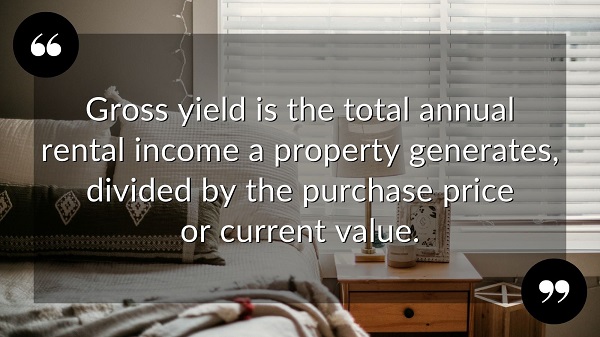
- The GROSS yield is a simple calculation of the total rental income as a percentage of the value of a property. When you’re considering buying a rental investment, most yields you’ll see quoted online are gross rental yields.
- In contrast, the NET yield is the profit after removing the ongoing costs of owning a rental property like a mortgage, service charge, insurance, management fees, maintenance and repairs.
- Don’t forget that running costs can vary across different property types. For example, a flat converted from a house will have a smaller service charge than a luxury apartment complex, but extra facilities often attract higher rents and professional tenants.
All of the above makes it wise to consider the gross and net yields for a clear picture of a property’s likely performance.
HOW DO I CALCULATE THE RENTAL YIELD OF MY BUY-TO-LET?
Calculating your rental yield is quite straightforward, and there’s a formula for gross and net to reach the correct percentage.

Calculating gross yield
Gross yield is simply the amount of income your buy-to-let generates divided by the property’s value.
For a purchase price of £250,000 with an annual rental income of £12,000 (£1,000 per calendar month), the calculation for your gross rental yield is:
(£12,000 ÷ £250,000) x 100 = 4.8%
Calculating net rental yield
Net yield is about your monthly profit after taking into account all the costs involved in owning your buy-to-let.
If you bought a property for £250,000, generated £12,000 annual rental income (£1,000 per calendar month) and had £4,000 expenses, your yearly profit would be £8,000. The calculation for your net rental yield is:
((£12,000 - £4,000) ÷ £250,000) x 100 = 3.2%
As a rule of thumb, the gap between your gross and net rental yield should be no more than 2%. If the difference is wider, check for potential savings in your outgoings like mortgage payments and insurances, or whether your rental income has fallen behind the market and needs a review.
WHY DO I NEED TO TRACK MY RENTAL YIELD?
It’s a sensible business decision to keep an eye on the progress and profitability of any investment. Rising property values are highly visible, and your increasing equity will open up more options around refinancing in the future.
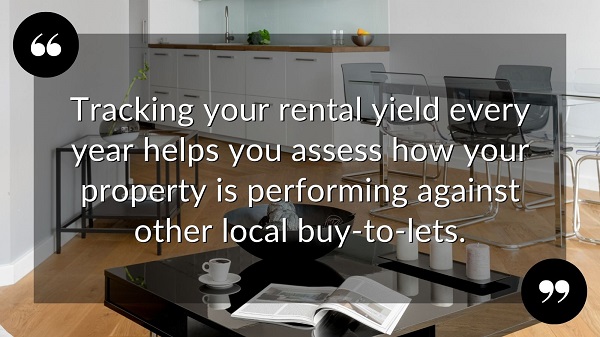
Less immediately obvious are the changes to your rental yield against the updated capital value, but by tracking your yield, you can:
- monitor the ongoing performance of your buy-to-let within the local market and against national trends
- create a plan for improvements and upgrades to increase your income and add more value
- decide whether to keep your property, expand your rental portfolio or sell up
For an accurate annual comparison, pick a recurring date that’s right for you. That could be the anniversary of your purchase, the end of the tax year, or perhaps the start of a new calendar year.
What’s your next step?
Would you like an up-to-date assessment of the current rental value of a buy-to-let you already own, or how you can increase its performance?
Give us a call on 01722 580059 or drop us a line at info@piccoloproperty.co.uk- we’re always on hand with some friendly and expert advice to improve your life as a landlord.





Share this with
Email
Facebook
Messenger
Twitter
Pinterest
LinkedIn
Copy this link